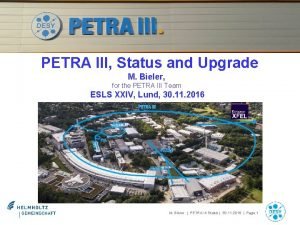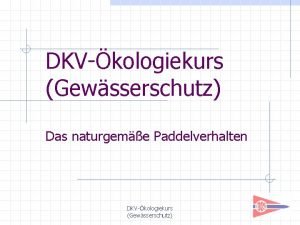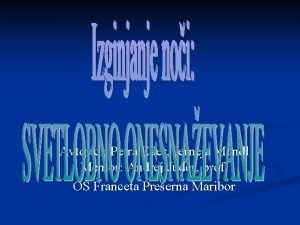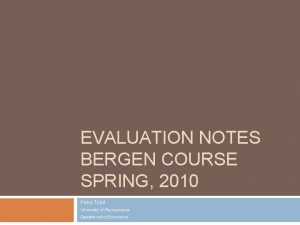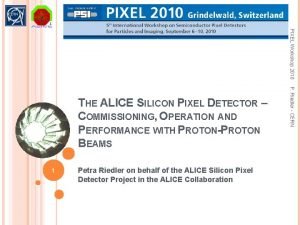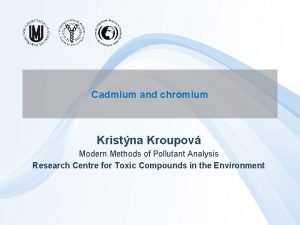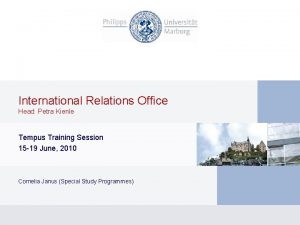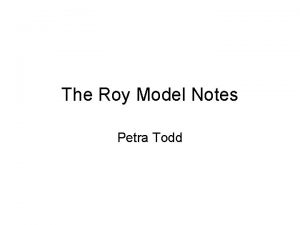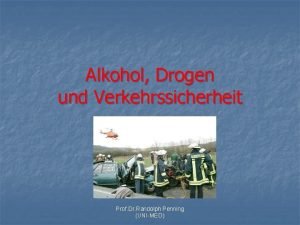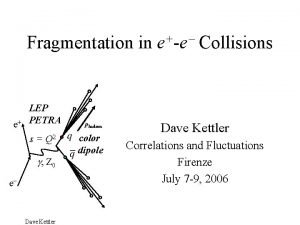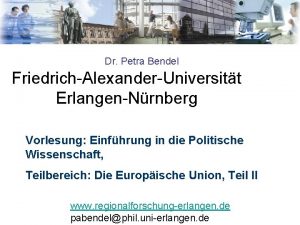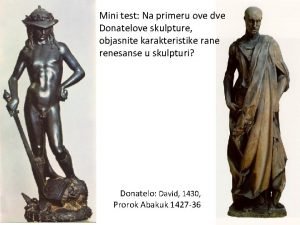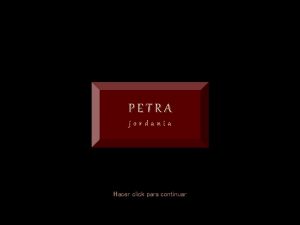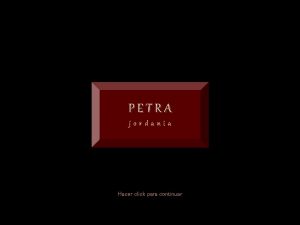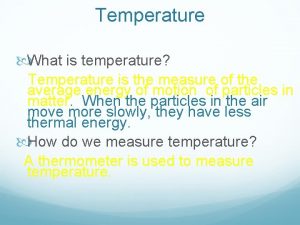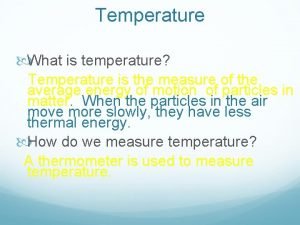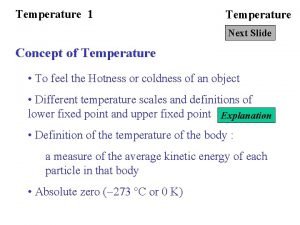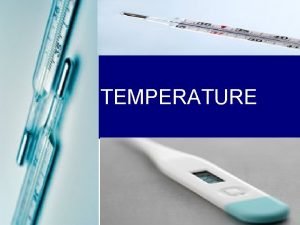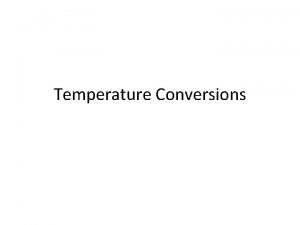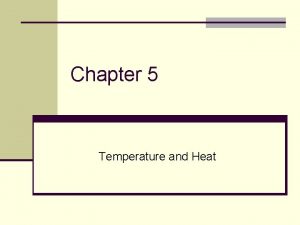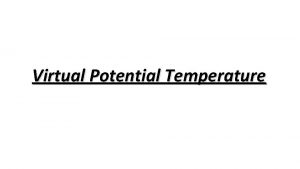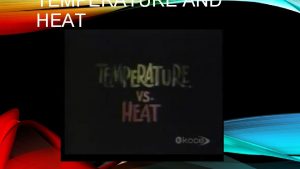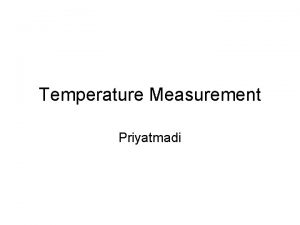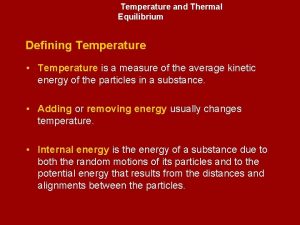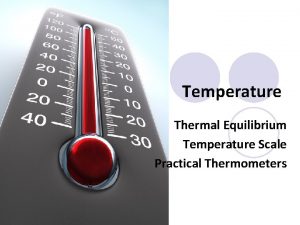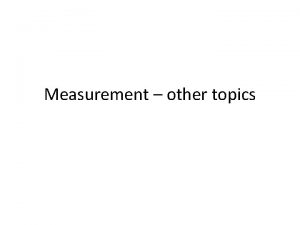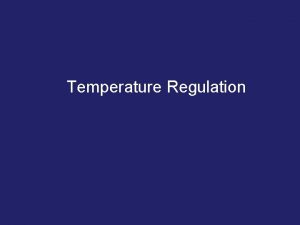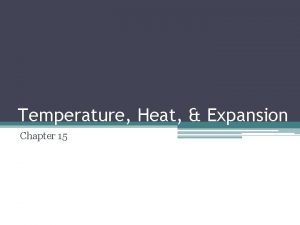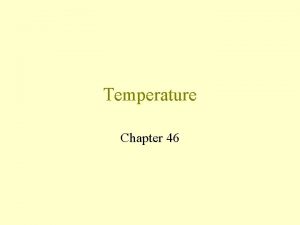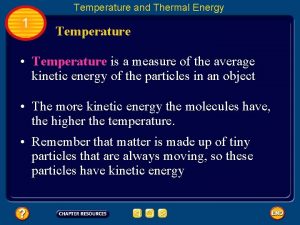Temperature Simulation DCCT at PETRA III D Lipka





















- Slides: 21

Temperature Simulation DCCT at PETRA III D. Lipka, MDI, DESY Hamburg; 27. 08. 2010

Problem • • • Two cases of operation with different temperatures at the current monitor observed Case 1: I 1=85 m. A, N=160 Bunches gives about 70°C Case 2: I 2=65 m. A, N=40 Bunches gives about 130°C Questions: Why case 2 higher temperature? Why temperature high? D. Lipka, MDI, DESY Hamburg; 27. 08. 2010

Answer Problem 1 • • • Power P = I Q kloss I is mean beam current Q is charge = I Dt Dt is bunch distance = t / N t is PETRA III revolution time = 7. 685 µs kloss is voltage loss per charge for a structure Result in P = I 2 t kloss / N P 1/P 2 = 0. 43 Because P 2 is higher the temperature is higher! Compare: PE-XFEL, max/P 2=0. 0001 D. Lipka, MDI, DESY Hamburg; 27. 08. 2010

Setup DCCT PEEK Al. Mg 3 µ-metal Stainless Steel Cu. Be Iron ceramic In CST imported model from Annette Brenger D. Lipka, MDI, DESY Hamburg; 27. 08. 2010

Inner Setup Bellow shielded, but results in a resonator Ceramic coated with Molybdenum. When a charged particle moves through DCCT, it looses energy due to gap=8. 2 mm! D. Lipka, MDI, DESY Hamburg; 27. 08. 2010

Simulation 1. Wakefield simulation with beam: get energy loss 2. Eigenmode of setup: get field distribution of loss 3. Thermal: input power and field distribution, get temperature distribution D. Lipka, MDI, DESY Hamburg; 27. 08. 2010

Wakefield Simulation Mesh cells around bellow and ceramic: Simulation tool can not resolve bellow and coating perfect! Anyhow: kloss=39. 1 V/n. C ->P 1=13. 6 W, P 2=31. 7 W D. Lipka, MDI, DESY Hamburg; 27. 08. 2010

Eigenmode Simulation Setup: only vacuum part Field distribution between bellow and shielding D. Lipka, MDI, DESY Hamburg; 27. 08. 2010

Temperature Distribution P 2 Included: heat conductivity of all materials and heat radiation No special cooling available, next is 4. 2 m away. Therefore cooling applied at the end of both beam pipes at 2. 1 m No cooling in x and y Here maximum temperature of 107 °C D. Lipka, MDI, DESY Hamburg; 27. 08. 2010

Temperature distribution shortened P 2 Here the distance to cooling is only 200 mm, Tmax=106°C, because heat radiation along pipe acts like a cooling, therefore this shortened model can be used Measured 130°C; Simulation underestimates temperature by 18%, reason: mesh, perhaps higher loss factor in reality D. Lipka, MDI, DESY Hamburg; 27. 08. 2010

Temperature distribution P 2 with airflow Here the simulation box increased with cooling at xmin, max and ymin, max, Tmax reduces from 106°C to 87. 5 °C D. Lipka, MDI, DESY Hamburg; 27. 08. 2010

Temperature distribution P 1 Airflow switched off. Lower Temperature because of lower power Measured 70°C, simulation lower by 16% D. Lipka, MDI, DESY Hamburg; 27. 08. 2010

Setup: smaller gap Smaller gap = 1. 7 mm should reduce energy loss Gap near chamfer to result in good energy transmission Kloss = 15. 1 V/n. C D. Lipka, MDI, DESY Hamburg; 27. 08. 2010

Eigenmode distribution Field amplitude near gap D. Lipka, MDI, DESY Hamburg; 27. 08. 2010

Temperature distribution P 2 Maximum temperature reduced from 106 °C to 55°C (remember: simulation underestimates temperature) D. Lipka, MDI, DESY Hamburg; 27. 08. 2010

Setup without coating gap = 1. 7 mm symmetrically below ceramic Ceramic without coating to result in higher energy transmission Kloss = 26. 6 V/n. C, because gap is deeper without coating D. Lipka, MDI, DESY Hamburg; 27. 08. 2010

Eigenmode distribution Field has poor accuracy, because space between bellow and iron included; highest amplitude near left gap D. Lipka, MDI, DESY Hamburg; 27. 08. 2010

Temperature distribution P 2 Maximum temperature reduced from 106 °C to 85°C (remember: simulation underestimates temperature) D. Lipka, MDI, DESY Hamburg; 27. 08. 2010

Setup: with coating and add shielding gap = 8. 2 mm like origin, coating actives Shielding of resonator Kloss reduced to 4. 4 V/n. C, because influence of resonator avoided No resonance found below cutoff (2. 44 GHz) D. Lipka, MDI, DESY Hamburg; 27. 08. 2010

Temperature distribution P 2 Maximum temperature reduced from 106 °C to 31°C (remember: simulation underestimates temperature) D. Lipka, MDI, DESY Hamburg; 27. 08. 2010

Summary • Simulated temperature distribution • Temperature underestimated, but trend is in agreement • Smaller gap and shielding of resonator reduces temperature • Suggestion: smaller gap and/or close space between bellow and shielding D. Lipka, MDI, DESY Hamburg; 27. 08. 2010 origin
 Veslonožce
Veslonožce Petra 3 status
Petra 3 status Hamlet act iii scene iii
Hamlet act iii scene iii Difference between curie temperature and neel temperature
Difference between curie temperature and neel temperature Difference between curie temperature and neel temperature
Difference between curie temperature and neel temperature Ferrimagnetism
Ferrimagnetism Petra schellhorn
Petra schellhorn Petra eder
Petra eder Petra todd
Petra todd Petra riedler
Petra riedler Petra lovka
Petra lovka Petra bořilová linhartová
Petra bořilová linhartová Petra kienle
Petra kienle Petra todd model
Petra todd model Ard madrasahku
Ard madrasahku Magyar petra
Magyar petra Randolph penning
Randolph penning Beta petra peak
Beta petra peak Petra pavla meniny
Petra pavla meniny Petra bendel
Petra bendel Petra vallin
Petra vallin Kapela paci
Kapela paci

